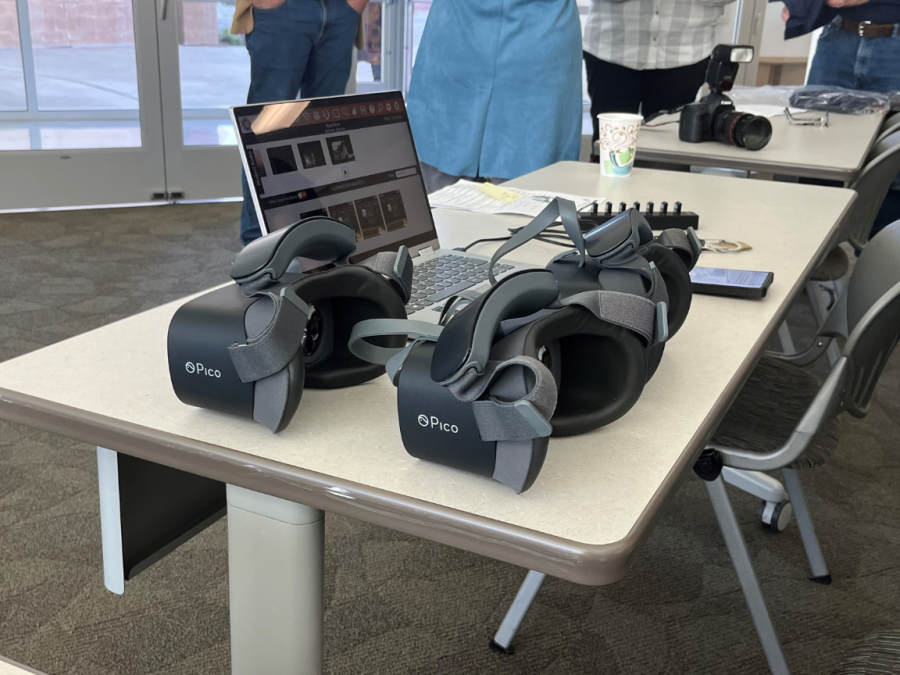Fire Technology program receives new way to train students to fight fires
CRC’s Fire Technology Program demonstrates new virtual reality headsets to help train students in the Winn Center on Monday. The event allowed visitors to try on the headsets and see different scenarios that students will go through.
Cosumnes River College’s Fire Technology program demonstrated their 20 newly-acquired virtual reality headsets in the Winn Center on Monday.
Interim Dean of Health and Human Services Kris Hubbard said he collaborated with American River College for a $200,000 regional workforce grant to get the new training technology. The headsets allow students in the program to experience how to handle hostile situations for firefighters without being put in danger.
“This will give us the opportunity to show them first, talk to them first and then we can reinforce that by then going into the live fire,” said Fire Technology Coordinator Richard Haas.
Haas said prior to the VR headsets, the training consisted of “hands-on” training and “instructional videos” and will still be part of CRC’s Fire Technology program.
“It’s required by the state and the national curriculum that we follow, so they’re still going to go into a hostile environment,” Haas said. “This is just going to give us the ability to show them and explain to them first.”
Cody Newcomer, a firefighter paramedic at Cosumnes Community Services District Fire Department and training representative for Darley, helped set up VR headsets. Darley is the company who made the VR headsets.
“This kind of captivates them and really puts them somewhere else,” Newcomer said. “They’re getting their full attention and everything, so it’s definitely beneficial.”
Newcomer said he uses an application on the computer called “RiVR Link” to upload footage from a 2D or 360 camera onto an SD card. The SD card can then be placed into the headsets and downloaded to the headsets to be seen in VR.
It also allows for a trainer to see where students are in the scenario and what the students are looking at, Newcomer said.
CRC President Ed Bush attended the event and saw the headsets and said he was pleased with the results.
“Any additional tools or technology that allow them to be able to be more competent and more prepared to do that work, I think, is resources well spent,” Bush said.
Hubbard can see the VR headsets being used for other programs as well.
“I can use these headsets and all I need to do is input the right video for the right discipline and that’s the real cool thing about this program,” Hubbard said. “We can change it up for anything.”
Bush agreed with Hubbard and said he wanted to use VR to complement the education that occurs in classrooms.
“I think as long as we keep in mind that this is complementing the work of our faculty, enhancing the experience for our students, but not replacing what they were getting inside of the classroom, then I think we’re going to be okay,” Bush said.

